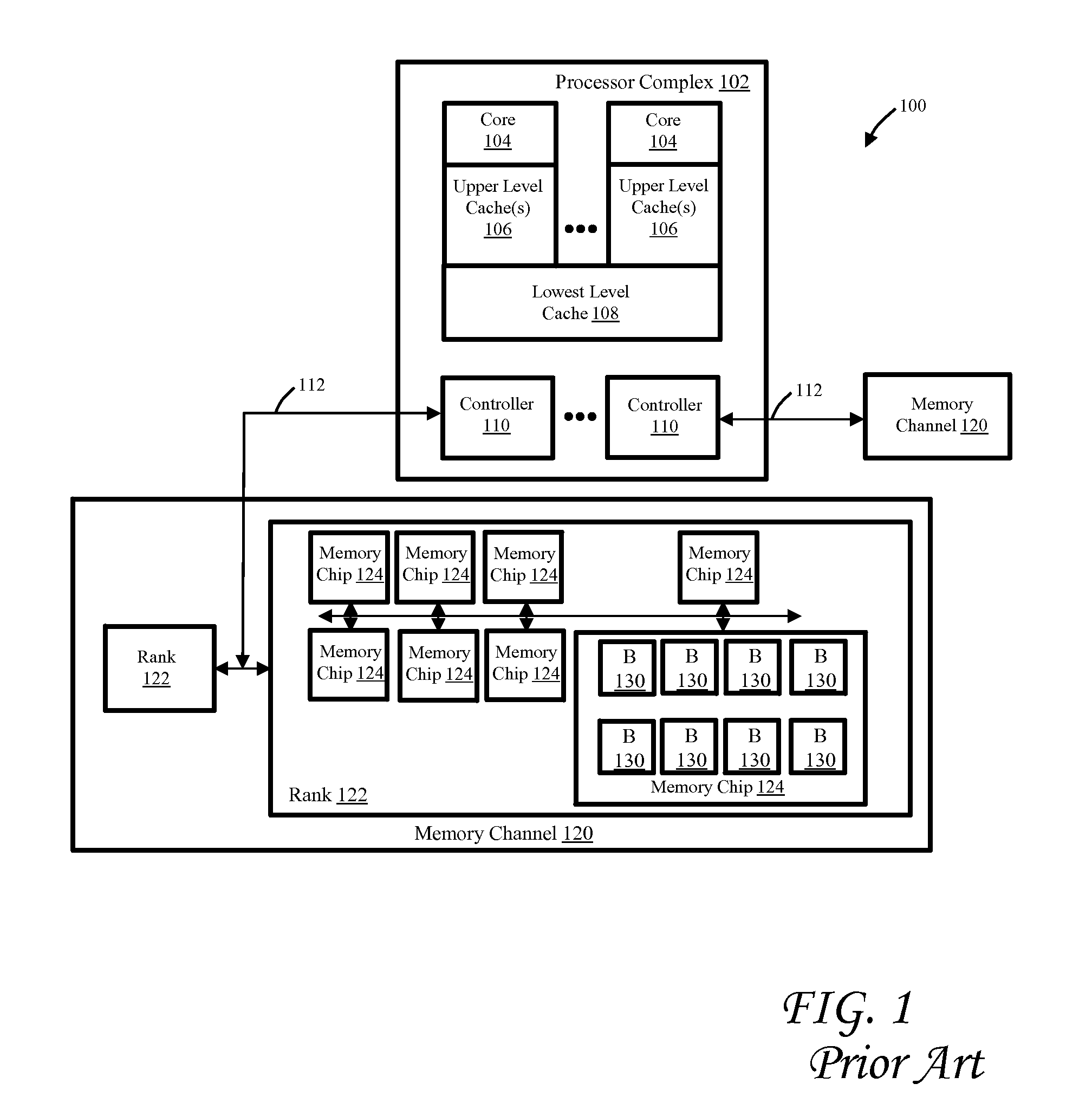Dynamic write priority based on virtual write queue high water mark for set associative cache using cache cleaner when modified sets exceed threshold
a writeback instruction and writeback priority technology, applied in the field of memory devices for computer systems, can solve the problems of increasing bandwidth and latency of memory controllers, adversely affecting the scheduling of sequential accesses to main memory with spatial locality, and critical dram timing parameters not improving at the same rate, so as to achieve the effect of lowering the priority of writeback instructions
- Summary
- Abstract
- Description
- Claims
- Application Information
AI Technical Summary
Benefits of technology
Problems solved by technology
Method used
Image
Examples
Embodiment Construction
)
[0022]The present invention adds to the prior art described in U.S. Patent Application Publication nos. 2011 / 0276762 (now U.S. Pat. No. 8,838,901) and 2011 / 0276763 (now U.S. Pat. No. 8,683,128) by building a structure known as the dirty vector in the memory controller, which tracks the amount of congruence classes (sets) within the lowest-level cache that contain modified cache lines. When the number of dirty sets within a virtual write queue of the lowest-level cache exceeds a programmable threshold (high water mark), the memory controller dynamically elevates the priority of these scheduled writebacks (potentially at the expense of reads being sent to main memory) as they are processed to main memory. This elevated priority of scheduled writes to main memory continues until a burst of castouts are executed in order to allow the number of dirty sets in the virtual write queue to dip below a programmable low water mark.
[0023]This mechanism allows scheduled castouts to be written to...
PUM
 Login to View More
Login to View More Abstract
Description
Claims
Application Information
 Login to View More
Login to View More - R&D
- Intellectual Property
- Life Sciences
- Materials
- Tech Scout
- Unparalleled Data Quality
- Higher Quality Content
- 60% Fewer Hallucinations
Browse by: Latest US Patents, China's latest patents, Technical Efficacy Thesaurus, Application Domain, Technology Topic, Popular Technical Reports.
© 2025 PatSnap. All rights reserved.Legal|Privacy policy|Modern Slavery Act Transparency Statement|Sitemap|About US| Contact US: help@patsnap.com



